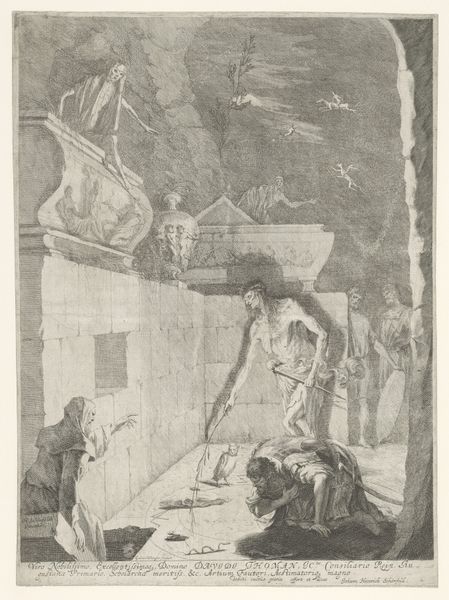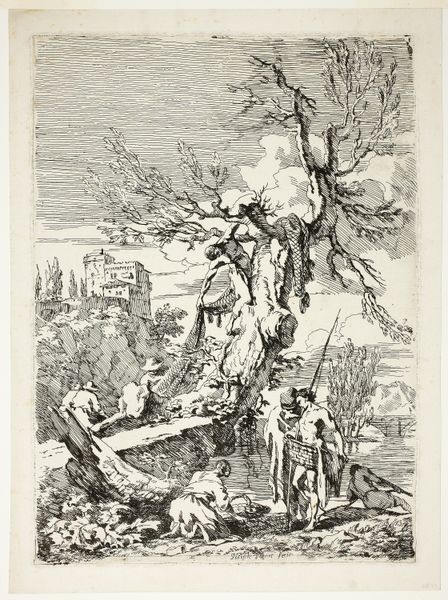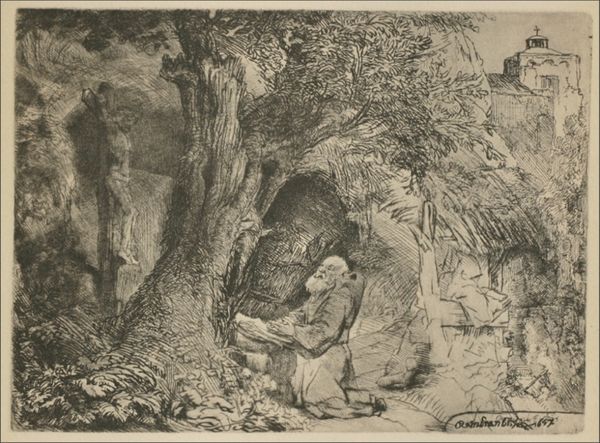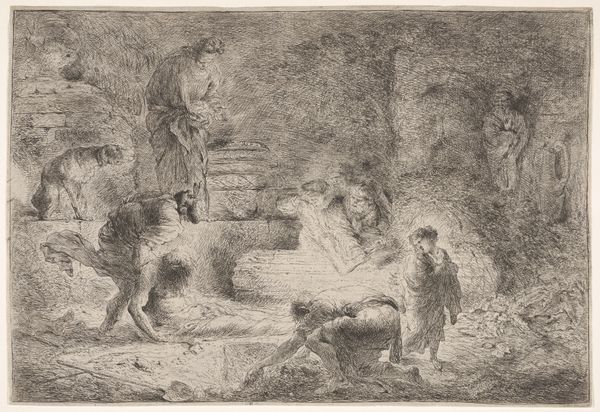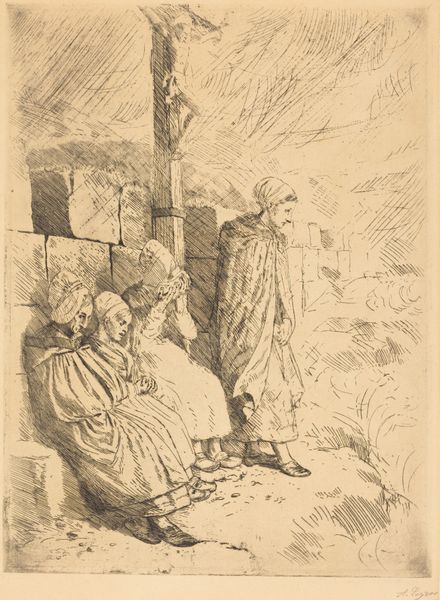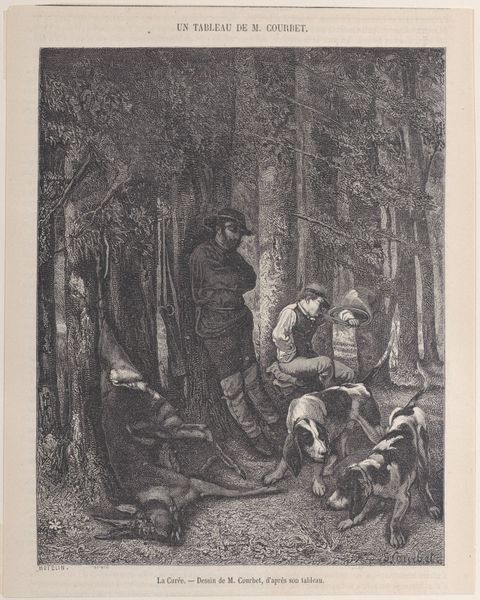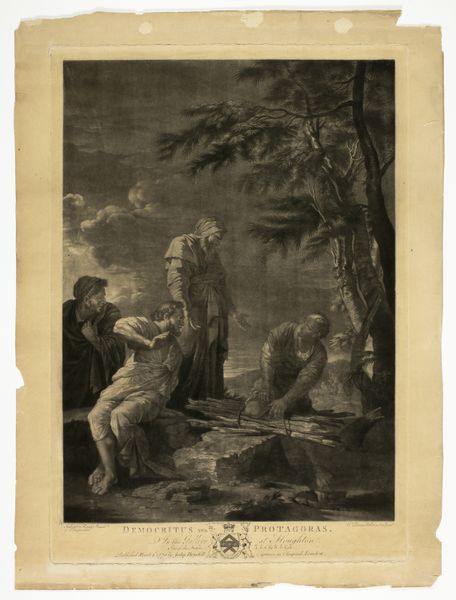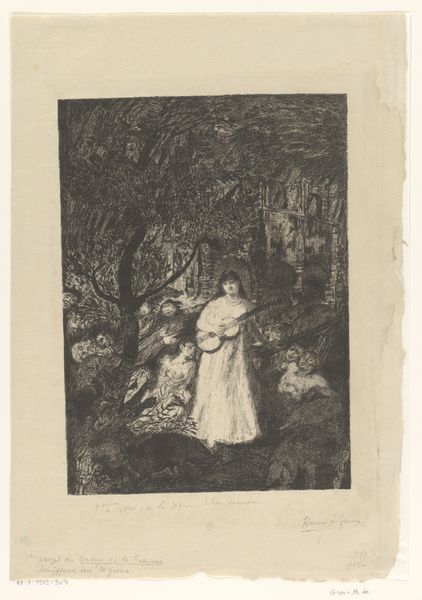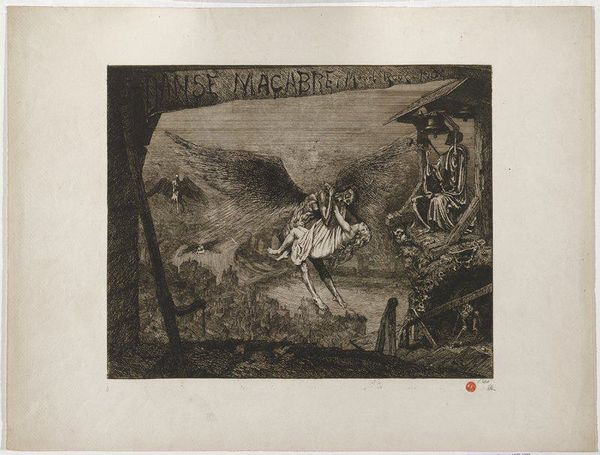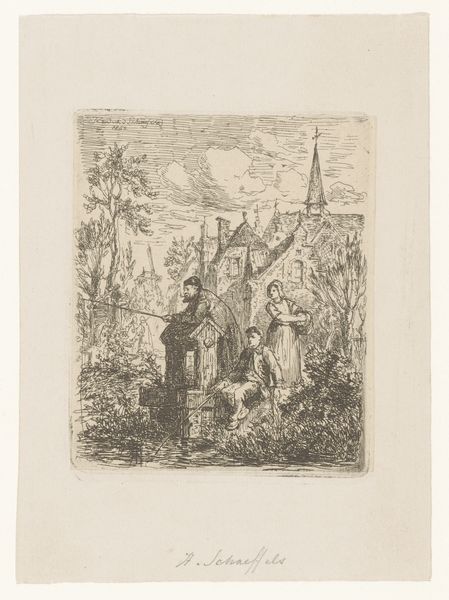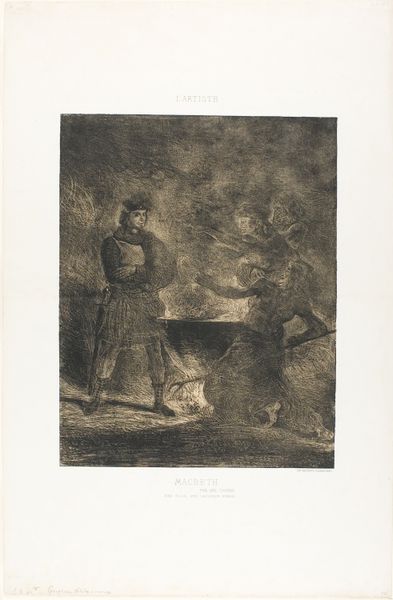
drawing, print, paper, engraving
#
drawing
# print
#
landscape
#
etching
#
figuration
#
paper
#
hudson-river-school
#
history-painting
#
engraving
Dimensions: 233 × 353 mm (image); 269 × 394 mm (sheet)
Copyright: Public Domain
Curator: Let’s discuss "Under the Falls, Catskill Mountains," likely created in 1872 by Winslow Homer. This artwork now resides here at the Art Institute of Chicago, and it appears to be an etching. The texture feels so tactile even just viewing it here. Editor: The atmosphere is almost claustrophobic. You have the dense, craggy rock face pressing in, with only the waterfall providing a sense of light and air, and look at those tiny people; are they being crushed by this sublime wilderness? Curator: Considering it's an etching, note how Homer’s meticulous rendering creates such varying light and shadow. It guides your eye. What does that say about labor, using etching needles, acids, and presses in service to art during that period? Also, don’t you think his choices underscore the experience of nature as a consumable spectacle? Editor: Absolutely. It speaks to the romantic ideal of taming, experiencing, even framing nature for societal consumption, as with those visitors dressed in high fashion! The gender politics also fascinate me: The figures, those stylish ladies with their walking sticks, represent a specific class engaging in leisure— but what are their stories in this rugged landscape, and is this wilderness really theirs to 'discover?' Curator: Those layered skirts against such brutal rocks! You see that contrast throughout the image: the manufactured dresses with organic flow of water. Etching as a process sits within a spectrum, you know? Industrial reproduction meets handmade artistry. Homer worked commercially, providing images for publications like Harper’s Weekly. These images allowed mass dissemination that fueled public awareness about land and access. Editor: And mass awareness can both glorify and commodify. There is something of an unsettling tension here between enjoyment and perhaps unwitting exploitation. I wonder to what extent his representations actually encouraged stewardship or fueled resource extraction for future generations? Who got to consume it? And who continues to have access today? Curator: It makes one consider the accessibility of art making alongside land stewardship... thank you. Looking closely, I am left considering those minute cross-hatching marks creating an overall impactful illustration. Editor: For me, it is all about who feels like they belong in a space versus feeling estranged or exiled, regardless of the beauty. Let's not take for granted who can lay claim on that beauty, then or now.
Comments
No comments
Be the first to comment and join the conversation on the ultimate creative platform.

